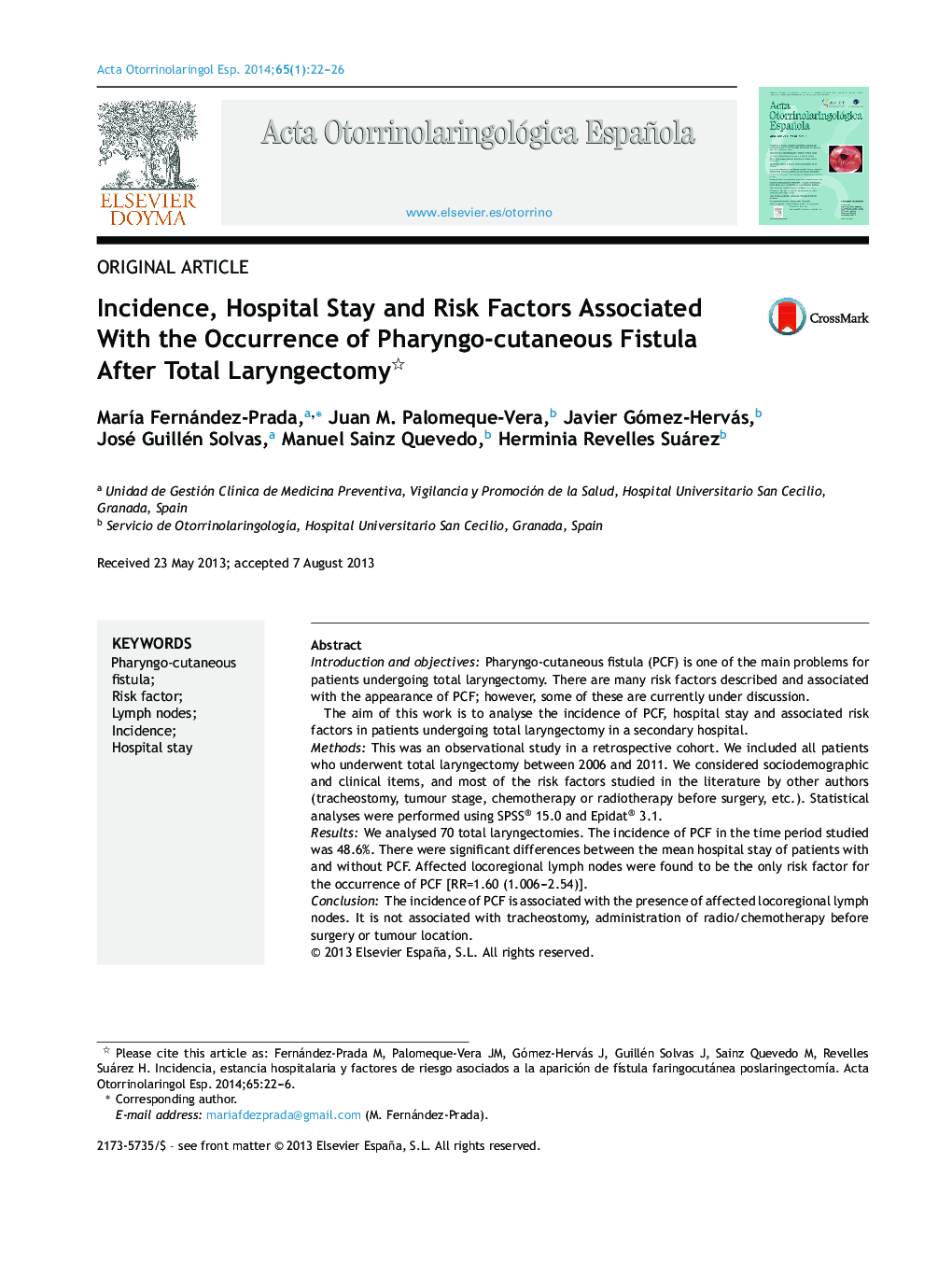| Article ID | Journal | Published Year | Pages | File Type |
|---|---|---|---|---|
| 4100936 | Acta Otorrinolaringologica (English Edition) | 2014 | 5 Pages |
Introduction and objectivesPharyngo-cutaneous fistula (PCF) is one of the main problems for patients undergoing total laryngectomy. There are many risk factors described and associated with the appearance of PCF; however, some of these are currently under discussion.The aim of this work is to analyse the incidence of PCF, hospital stay and associated risk factors in patients undergoing total laryngectomy in a secondary hospital.MethodsThis was an observational study in a retrospective cohort. We included all patients who underwent total laryngectomy between 2006 and 2011. We considered sociodemographic and clinical items, and most of the risk factors studied in the literature by other authors (tracheostomy, tumour stage, chemotherapy or radiotherapy before surgery, etc.). Statistical analyses were performed using SPSS® 15.0 and Epidat® 3.1.ResultsWe analysed 70 total laryngectomies. The incidence of PCF in the time period studied was 48.6%. There were significant differences between the mean hospital stay of patients with and without PCF. Affected locoregional lymph nodes were found to be the only risk factor for the occurrence of PCF [RR=1.60 (1.006–2.54)].ConclusionThe incidence of PCF is associated with the presence of affected locoregional lymph nodes. It is not associated with tracheostomy, administration of radio/chemotherapy before surgery or tumour location.
ResumenIntroducción y objetivosLa fístula faringocutánea (FFC) constituye uno de los principales problemas para los pacientes sometidos a laringectomía total. Son numerosos los factores de riesgo descritos y asociados a la aparición de la FFC, sin embargo algunos de ellos se encuentran en discusión.El objetivo es analizar la incidencia de la FFC, la estancia hospitalaria y los factores de riesgo asociados en los pacientes intervenidos de laringectomía total en un hospital de segundo nivel.MétodosEstudio analítico observacional en una cohorte retrospectiva. Se incluyeron todos los pacientes intervenidos de laringectomía total entre los años 2006 y 2011. Se tuvieron en cuenta variables sociodemográficas, clínicas y la mayoría de los factores de riesgo estudiados en la literatura por otros autores (traqueostomía, estadificación tumoral, quimio/radioterapia previa, etc.). Los análisis estadísticos se llevaron a cabo mediante el programa SPSS® v.15.0 y el Epidat® v.3.1.ResultadosSe analizaron 70 laringectomías totales. La incidencia de FFC en el período de estudio fue del 48,6%. Hubo diferencias significativas entre la estancia hospitalaria media de los pacientes con y sin FFC. Se encontró como único factor de riesgo para la aparición de la FFC la presencia de adenopatías locorregionales afectadas [RR=1,60 (1,006–2,54)].ConclusiónLa aparición de FFC se encuentra asociada a la presencia de adenopatías locorregionales afectadas, y no se asocia con la traqueostomía, la administración de radio/quimioterapia previa a la intervención o la localización tumoral.
